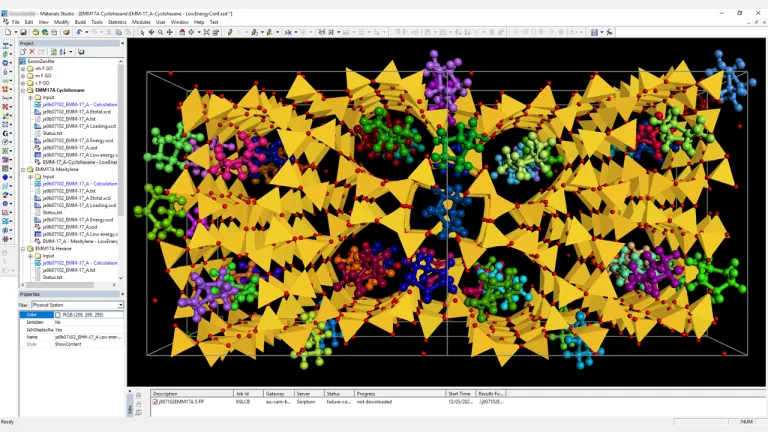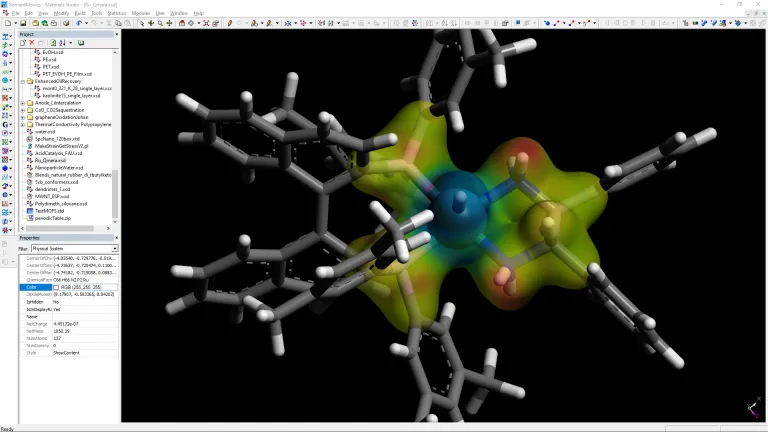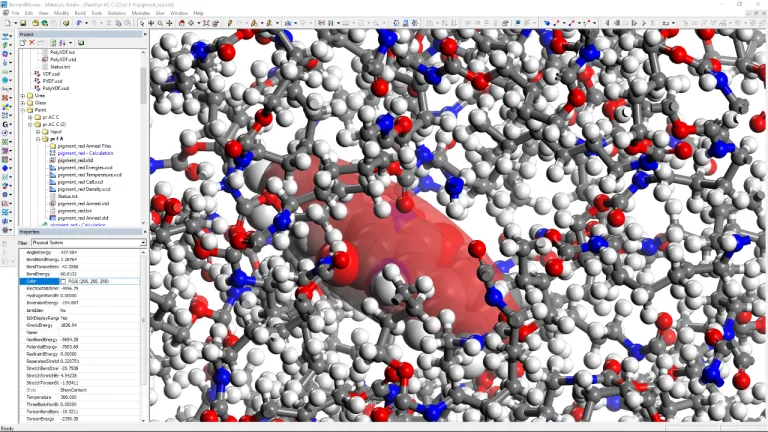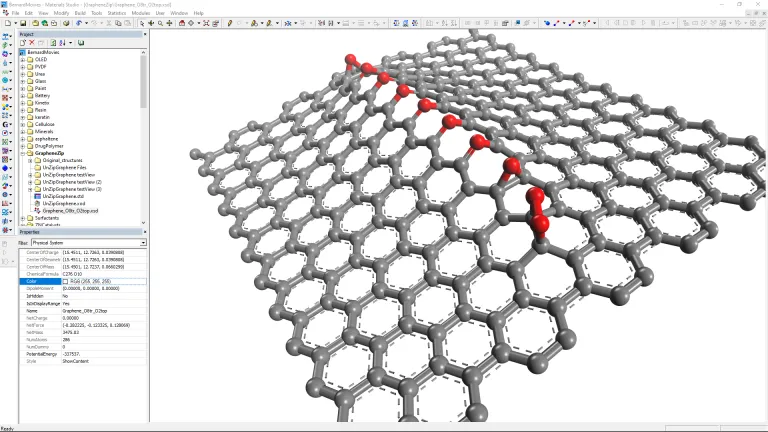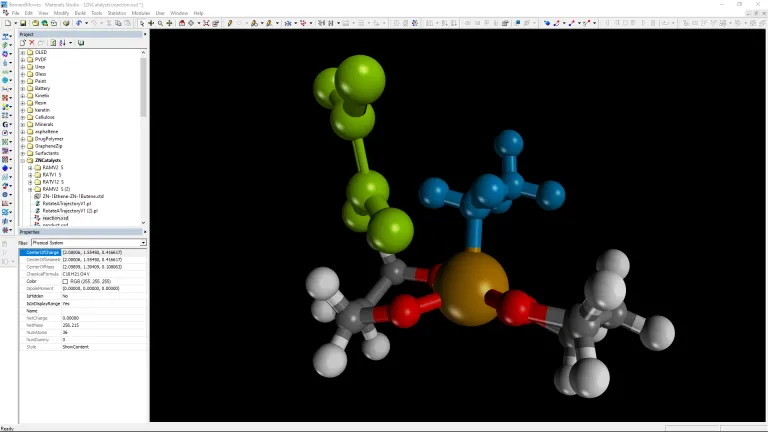Chemicals & Catalysts
Empowering Chemical & Catalyst R&D with BIOVIA Materials Studio
Accelerate Product Development with BIOVIA Materials Studio
Catalysts enable more efficient and selective chemical synthesis by controlling chemical reaction pathways. They underpin the processing of oil into specialty chemicals and the manufacture of many everyday chemical products and pharmaceuticals. They also enable technology such as fuel cells and catalytic converters and thus play a key role in preserving the environment. Improving the overall efficiency of existing catalysts – their activity, selectivity and stability – is therefore an active area of research. Even marginal improvements in catalytic activity can net tens or hundreds of millions of dollars in savings through reduced energy consumption.
Providing a Unique Insight
BIOVIA Materials Studio provides a comprehensive suite of methods to predict and characterize the behavior of catalysts in silico, which provides provide unique insight into these interactions and significantly accelerate catalyst design and optimization.
- Catalyst Properties
- Reaction Modeling
- Specialty Chemicals
- Bulk Chemicals and Solvents
Predicting Catalysts Properties
- Locate the most stable adsorption sites in materials such as zeolites
- Calculate the impacts of local geometries and/or defects on the catalyst’s mechanism of action
- Screen new catalysts based on their chemical structures via statistical and Machine Learning methods
- Assess the electronic and chemical properties of metal-ligand complexes
- Predict catalyst structure and properties for large systems such as nanoparticles (>500 atoms)
Reaction Modeling
- Predict reaction energies, activation barriers, and kinetic rate constants
- Conduct simulations of chemical reactions taking place at crystal surfaces
- Predict concentrations of reactants and products under various reactor conditions and geometries
Specialty Chemicals
- Build predictive models which correlate molecular descriptors to materials properties
- Predict thermophysical properties of polymers, surfactants, and bulk chemicals
- Design protective coatings by understanding surface chemical processes such as absorption and corrosion at the atomic scale
- Predict the bulk scale properties of mixtures of chemicals such as lubricants, polymer blends with Quantitative Structure-Property Relationship models
Bulk Chemicals & Solvents
- Determine how changes in catalyst structure can impact the overall efficiency of bulk chemical production
- Gain an understanding of chemical reaction mechanisms in order to optimize chemical processes
- Model reactions across a solid catalyst surface to optimize reaction kinetics for a chemical conversion processes
- Perform reaction kinetics simulations to predict concentrations of reactants and products under various reactor and combustion models, conditions, and geometries
- Calculate further thermodynamic properties such as solubility and vapor pressure with BIOVIA COSMOtherm
Explore Our Methods
The world of Chemicals & Catalysts is changing. Discover how to stay a step ahead with BIOVIA
Join the conversation in the BIOVIA Materials Studio User Community!
Also Discover
Learn What BIOVIA Can Do for You
Speak with a BIOVIA expert to learn how our solutions enable seamless collaboration and sustainable innovation at organizations of every size.
Get Started
Courses and classes are available for students, academia, professionals and companies. Find the right BIOVIA training for you.
Get Help
Find information on software & hardware certification, software downloads, user documentation, support contact and services offering

